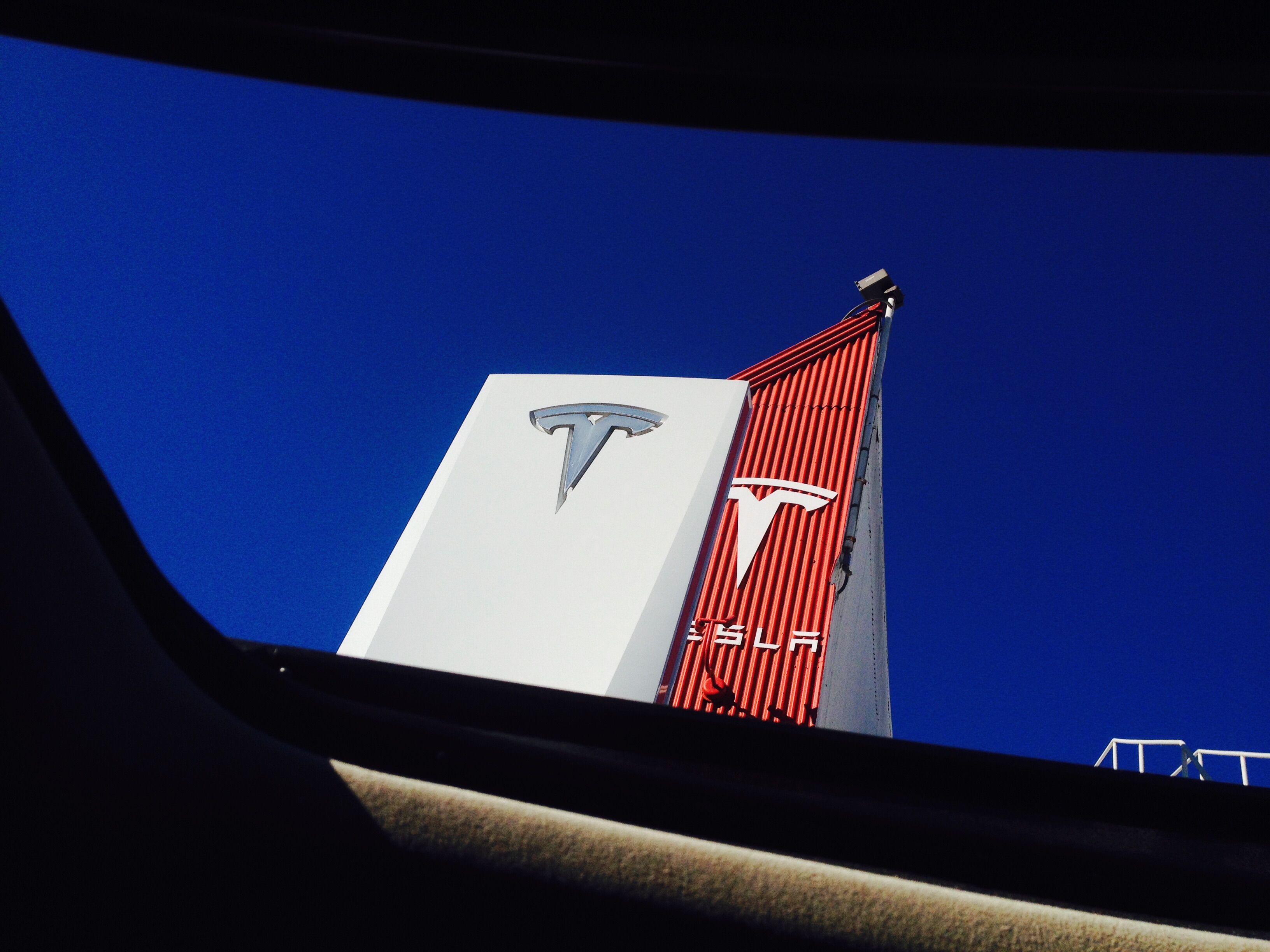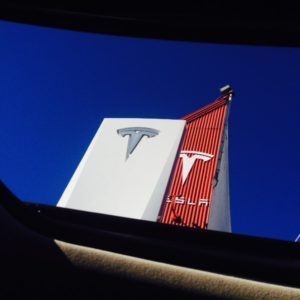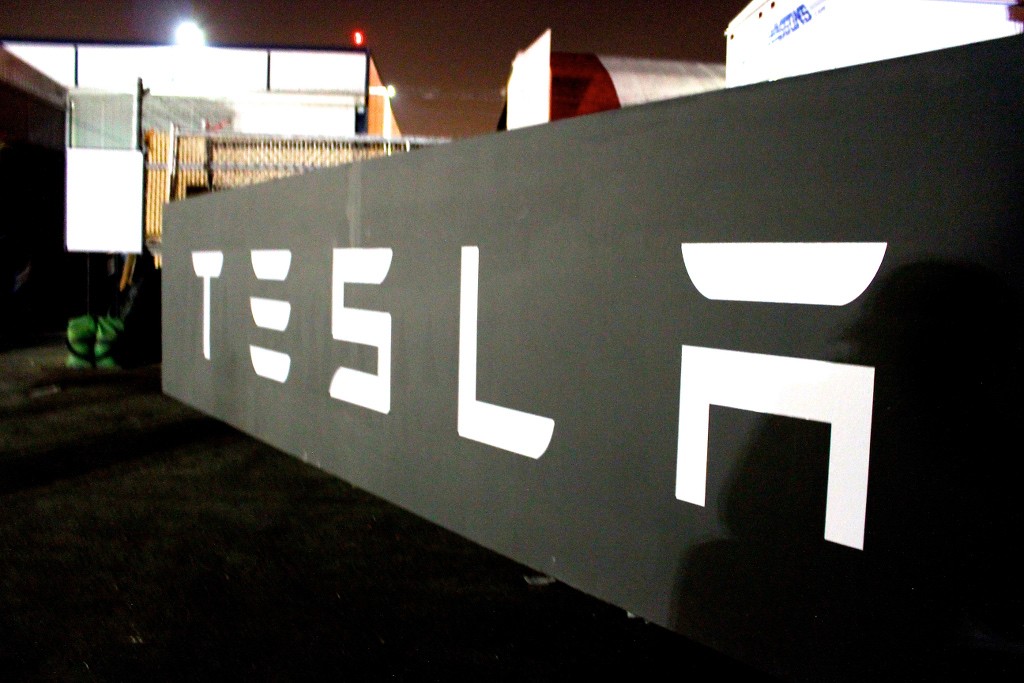Investor's Corner
Lost in Translation, Tesla’s Model 3 Marketing Begins
The irony is that this big, non-detailed marketing message has been the sweet spot for the legacy auto OEMs and gas cars, but now is being employed by a young car maker against their rivals.

During Elon Musk’s recent “end range anxiety” press conference, discussion turned to what he thought was the minimum amount of range for an electric car. “200 miles is the minimum threshold for an electric car. We need 200+ miles in real-world, not 200 miles in ‘AC-off, driving on a flat road,” Musk said on March 19th.
Discussion on the web has some fans and enthusiasts wondering whether Musk’s statement was purely discussion, Model 3 marketing or bragging about the company’s current cars. To me, it’s all about be beginning of the Model 3’s marketing campaign and this “little” reference reinforces to the public and media that Tesla Motors has already produced a 200+ mile car in 2012, not 2017.
In effect, Musk is saying “it’s great that Nissan and Chevy are talking about a 200-mile car in 2017.”
Musk is PT Barnum without the big con (…a little con slips out every now and then). The brilliance of Mr. Musk is that his company produced a game-changing vehicle in the right segment while leveraging a new drivetrain technology. First mover latitude to “speculate” on the technology’s future without a ton of pushback. When he talks the alchemy starts: a new car frontier mixes with Tesla Motors mission, image and whatever you want to call it.
Sure, there’s the battery swap hype of some years ago and the follow-through took sometime, but he has been busy.
Related Story >> A Peak into Tesla’s Battery Swap Station at Harris Ranch
 But back to the 200+ mile statement, Musk is right on the mark as I drive a MS 60 in the Chicagoland area. The MS 60 has 208 rated miles and during the winter, it will make you think a bit more about your travels, compared to a MS 85 and its 245+ real miles. When it dips below zero, I top out at 194 miles on a full charge. However, I don’t have any issues with my short commute to my house office and the occasional city trips for business, plus we’re a two-car family.
But back to the 200+ mile statement, Musk is right on the mark as I drive a MS 60 in the Chicagoland area. The MS 60 has 208 rated miles and during the winter, it will make you think a bit more about your travels, compared to a MS 85 and its 245+ real miles. When it dips below zero, I top out at 194 miles on a full charge. However, I don’t have any issues with my short commute to my house office and the occasional city trips for business, plus we’re a two-car family.
This 200-mile statement is all about marketing and positioning for the Model 3, while being completely honest and accurate.
Musk said, “Anything below 200 miles isn’t passing grade, most people are looking for 20 percent more than that.” Musk is playing the long game and dropping the seed with early-wave EV buyers that Tesla will be moving toward that number. However, the legacy automakers may hit 200 rated miles..and from recent Nissan reports they won’t even hit 200 miles with their 2017 car.
Musk’s statement did not get much notice, but this story line will pick up momentum. Musk and Tesla will add this to the arsenal for the next two years and say: Who do trust when you buy your first EV car in 2017 or 2018?
The irony is that this big, non-detailed marketing message has been the sweet spot for the legacy auto OEMs, but now is being employed by a young EV carmaker against its rivals.
For the electric drivetrain products, legacy carmakers are adjusting and trying to “educate” car consumers. BMW and Nissan are doing good work in this area, with ride-and-drives and email marketing but GM is out to lunch, marketing-wise…and that’s too bad.
Great cars and excellent marketing is a pretty good combination to have.
*Disclosure: Author is long and owns shares in Tesla Motors.

Investor's Corner
Tesla stock closes at all-time high on heels of Robotaxi progress

Tesla stock (NASDAQ: TSLA) closed at an all-time high on Tuesday, jumping over 3 percent during the day and finishing at $489.88.
The price beats the previous record close, which was $479.86.
Shares have had a crazy year, dipping more than 40 percent from the start of the year. The stock then started to recover once again around late April, when its price started to climb back up from the low $200 level.
This week, Tesla started to climb toward its highest levels ever, as it was revealed on Sunday that the company was testing driverless Robotaxis in Austin. The spike in value pushed the company’s valuation to $1.63 trillion.
Tesla Robotaxi goes driverless as Musk confirms Safety Monitor removal testing
It is the seventh-most valuable company on the market currently, trailing Nvidia, Apple, Alphabet (Google), Microsoft, Amazon, and Meta.
Shares closed up $14.57 today, up over 3 percent.
The stock has gone through a lot this year, as previously mentioned. Shares tumbled in Q1 due to CEO Elon Musk’s involvement with the Department of Government Efficiency (DOGE), which pulled his attention away from his companies and left a major overhang on their valuations.
However, things started to rebound halfway through the year, and as the government started to phase out the $7,500 tax credit, demand spiked as consumers tried to take advantage of it.
Q3 deliveries were the highest in company history, and Tesla responded to the loss of the tax credit with the launch of the Model 3 and Model Y Standard.
Additionally, analysts have announced high expectations this week for the company on Wall Street as Robotaxi continues to be the focus. With autonomy within Tesla’s sights, things are moving in the direction of Robotaxi being a major catalyst for growth on the Street in the coming year.
Elon Musk
Tesla needs to come through on this one Robotaxi metric, analyst says
“We think the key focus from here will be how fast Tesla can scale driverless operations (including if Tesla’s approach to software/hardware allows it to scale significantly faster than competitors, as the company has argued), and on profitability.”

Tesla needs to come through on this one Robotaxi metric, Mark Delaney of Goldman Sachs says.
Tesla is in the process of rolling out its Robotaxi platform to areas outside of Austin and the California Bay Area. It has plans to launch in five additional cities, including Houston, Dallas, Miami, Las Vegas, and Phoenix.
However, the company’s expansion is not what the focus needs to be, according to Delaney. It’s the speed of deployment.
The analyst said:
“We think the key focus from here will be how fast Tesla can scale driverless operations (including if Tesla’s approach to software/hardware allows it to scale significantly faster than competitors, as the company has argued), and on profitability.”
Profitability will come as the Robotaxi fleet expands. Making that money will be dependent on when Tesla can initiate rides in more areas, giving more customers access to the program.
There are some additional things that the company needs to make happen ahead of the major Robotaxi expansion, one of those things is launching driverless rides in Austin, the first city in which it launched the program.
This week, Tesla started testing driverless Robotaxi rides in Austin, as two different Model Y units were spotted with no occupants, a huge step in the company’s plans for the ride-sharing platform.
Tesla Robotaxi goes driverless as Musk confirms Safety Monitor removal testing
CEO Elon Musk has been hoping to remove Safety Monitors from Robotaxis in Austin for several months, first mentioning the plan to have them out by the end of 2025 in September. He confirmed on Sunday that Tesla had officially removed vehicle occupants and started testing truly unsupervised rides.
Although Safety Monitors in Austin have been sitting in the passenger’s seat, they have still had the ability to override things in case of an emergency. After all, the ultimate goal was safety and avoiding any accidents or injuries.
Goldman Sachs reiterated its ‘Neutral’ rating and its $400 price target. Delaney said, “Tesla is making progress with its autonomous technology,” and recent developments make it evident that this is true.
Investor's Corner
Tesla gets bold Robotaxi prediction from Wall Street firm
Last week, Andrew Percoco took over Tesla analysis for Morgan Stanley from Adam Jonas, who covered the stock for years. Percoco seems to be less optimistic and bullish on Tesla shares, while still being fair and balanced in his analysis.

Tesla (NASDAQ: TSLA) received a bold Robotaxi prediction from Morgan Stanley, which anticipates a dramatic increase in the size of the company’s autonomous ride-hailing suite in the coming years.
Last week, Andrew Percoco took over Tesla analysis for Morgan Stanley from Adam Jonas, who covered the stock for years. Percoco seems to be less optimistic and bullish on Tesla shares, while still being fair and balanced in his analysis.
Percoco dug into the Robotaxi fleet and its expansion in the coming years in his latest note, released on Tuesday. The firm expects Tesla to increase the Robotaxi fleet size to 1,000 vehicles in 2026. However, that’s small-scale compared to what they expect from Tesla in a decade.
Tesla expands Robotaxi app access once again, this time on a global scale
By 2035, Morgan Stanley believes there will be one million Robotaxis on the road across multiple cities, a major jump and a considerable fleet size. We assume this means the fleet of vehicles Tesla will operate internally, and not including passenger-owned vehicles that could be added through software updates.
He also listed three specific catalysts that investors should pay attention to, as these will represent the company being on track to achieve its Robotaxi dreams:
- Opening Robotaxi to the public without a Safety Monitor. Timing is unclear, but it appears that Tesla is getting closer by the day.
- Improvement in safety metrics without the Safety Monitor. Tesla’s ability to improve its safety metrics as it scales miles driven without the Safety Monitor is imperative as it looks to scale in new states and cities in 2026.
- Cybercab start of production, targeted for April 2026. Tesla’s Cybercab is a purpose-built vehicle (no steering wheel or pedals, only two seats) that is expected to be produced through its state-of-the-art unboxed manufacturing process, offering further cost reductions and thus accelerating adoption over time.
Robotaxi stands to be one of Tesla’s most significant revenue contributors, especially as the company plans to continue expanding its ride-hailing service across the world in the coming years.
Its current deployment strategy is controlled and conservative to avoid any drastic and potentially program-ruining incidents.
So far, the program, which is active in Austin and the California Bay Area, has been widely successful.









